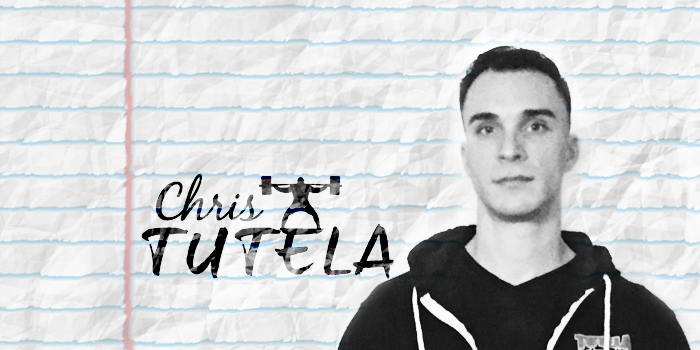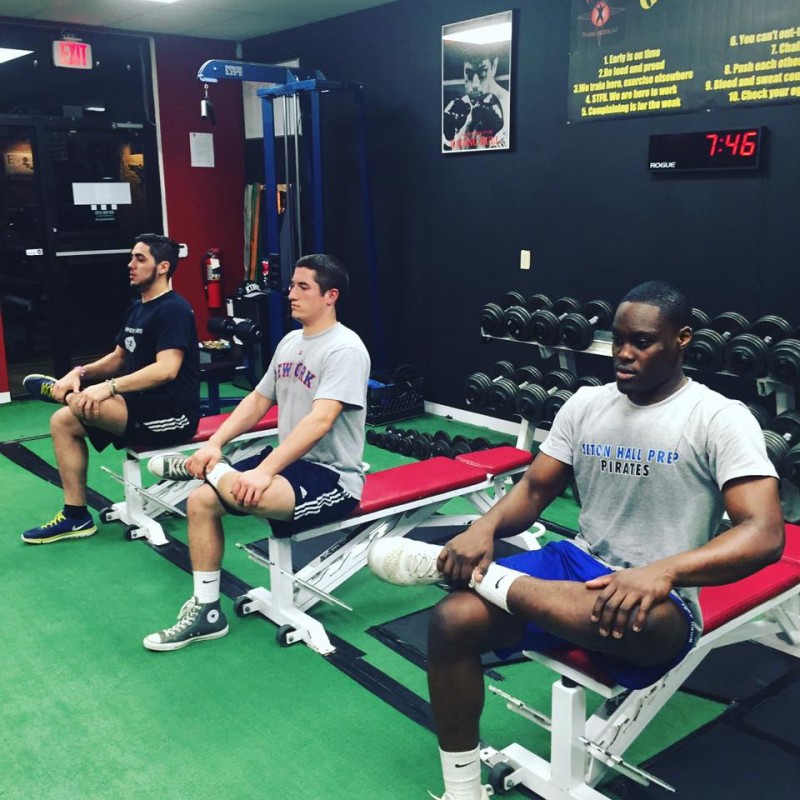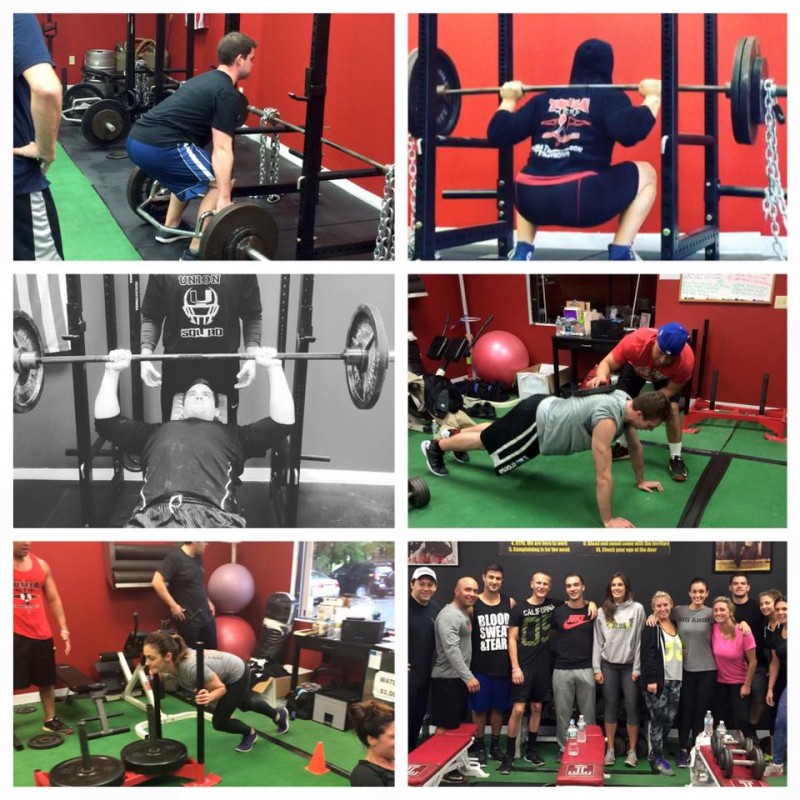
For years I have been accustomed to programming big, compound lifts first in my workouts. Unless on a given day we happened to be working on power development, I typically prescribed the big strength movements first, like most people do.
However, lately I have been doing more research on creating a safer approach. I kept coming across the concept of “getting a pump” prior to the big lifts. At first, I was extremely reluctant to try this out. I thought that if my athletes were pre-fatigued prior to the big lifts their strength would suffer, as well as their technique. I was comparing this to the old bodybuilding method of pre-exhaustion popularized by Joe Weider. The concept made a lot of sense to me when it came to bodybuilding. But athletes looking to make serious strength gains? I couldn’t help but scratch my head.
So before trying this out on my athletes, I decided to use myself as a guinea pig. Here is what I found…
RELATED: Strong and Energized vs Weak and Depleted: How High School Wrestlers Need to Eat
Having been training hard for 16 years, I do have some lower back tightness and minor pain from time to time. Nothing out of the ordinary. Before a big squat or deadlift session, I started using exercises like split squats and glute ham raises, and before an upper body day I used exercises like chest supported rows, band pull-aparts, push-ups, and side raises. Keep in mind that I don’t try to go super heavy here or anywhere near failure. I do sets of somewhere between 12-15 with a controlled tempo and quality technique.
Once I got to my working sets on my big lift for the day I felt better and stronger than just jumping into my big lifts after a dynamic warm-up! When you do this, not only are you activating the muscles being trained, but you are also producing more synovial fluid in the joints, which acts as a lubricant and can help reduce joint stress and pain.
Now, there is a possibility that you may lose a small percentage on your big lifts due to the small amount of fatigue you may feel. However, when you look at the grand scheme of things, the importance is that your athletes are working towards their goal more safely than before. As long as they are still making progressions, who cares if they lose a very small percentage on that particular training day?
When I started to apply this to my high school and college athletes, they loved it too. They looked and felt strong, and their technique actually improved! However, regarding enhanced athletic performance, I wanted to make sure that they were getting the most out of each session. Not only do we want them to get stronger in a safer manner, but we also still need to focus on mobility, power, and flexibility.
I have been reading a lot of work by Dr. John Rusin, who has certainly influenced me on this philosophy. As I started to apply these tactics, everything started to make a lot more sense. So here is what our training sessions currently look like for our more advanced athletes at Tutela Training Systems here in Clark, New Jersey.
Phase 1: Static Stretching and/or Self-Myofascial Release
Our athletes are advised to arrive 15 minutes before the start of their training sessions to work on flexibility and soft tissue. This gives them an extra 15 minutes a day to work on stuff that most athletes neglect. I know there has been some debate in the past about how bad it is for athletes to use static stretching prior to training. However, in my opinion, I feel that as long as they are not getting fatigued from intense stretching, a static stretch can help athletes that are tight get into certain positions that they may not be able to get into without a light stretch. As long as this comes before a dynamic warm-up, I have never seen any issues with any of the athletes I have ever trained, my adult clients, training partners, or myself in the last 11 years.
Phase 2: Dynamic Warm-Up
The dynamic warm-up is used for multiple reasons: to increase core temperature, heart rate, activate the CNS, lubricate the joints, activate the muscles being trained, improve mobility, and put you in a more ready, safer state to train in. The important thing here is that you do not just go through the motions, which I see time and time again in high school weight rooms.
As a coach, you have to be sure that your athletes are getting the most out of their warm-ups, otherwise it is a waste of time. You have to coach them on their technique even during their warm-up! That is, if you want it to do what it is designed to do.
Phase 3: Power Development/CNS Activation
Once we wrap up the warm-up, I like to hop right into some type of jump, throw, sprint, or upper body plyometric to work on power development. Along with developing power, these movements will excite the central nervous system that much more, which will prepare your athletes for their strength work.
MORE: Should I Lift or Should I Sprint — The Case for Power
To give you an idea, during this phase we use things like box jumps, squat jumps, vertical and broad jumps, medicine ball slams, overhead medicine ball soccer throws, medicine ball side throws, medicine ball sit-up throws, Prowler sprints, band-resisted sprints, flat ground sprints, and plyo push-ups. Typically we prescribe anywhere from three to five sets of three to five reps on jumps and throws, and 10-20 yards on sprint work.
Phase 4: Activation/Getting A Slight Pump
Once we get through our power stuff we then move on to our activation work. Our exercise selection here is based on our big strength movement of the day. For example, if we are squatting that day, we will use an exercise like split squats to fire the glutes, quads, and hip flexors. Alternatively, if we are starting with a bench press variation for our big lift, we will typically prescribe push-ups, band pull-aparts, and/or band-resisted rows to draw more blood and fluid to the shoulders and upper back. Sometimes we even do a quick superset with pushups and band-resisted rows.
It’s important that you emphasize staying clear of failure and not going too heavy here. The intention here is to bring more blood and fluid to the joints, warming up the muscles a bit more, improving mobility, and making the big lifts safer for your athletes. These sets are not intended to be ball-breaking work sets.
Phase 5: Strength
Now we get into our big strength stuff for the day. Here we are usually working on the big three and their variations with specialty bars, overhead pressing, and chin-up variations. Here we follow the same progressive overload principle as we normally would.
Through my experience using this approach, I have found that our athletes can actually get into certain positions better since they are even more warmed up. As I mentioned earlier, I have not noticed any major reduction in strength, only better technique and maybe a slight decrease on the training day. Overall, each athlete has improved their lifts and have gotten stronger.
Phase 6: Hypertrophy
After our major strength work for the day, we then move to our hypertrophy work. We utilize rep ranges anywhere from eight to 15, and occasionally high rep sets of 20 or so if it’s a lower body day. The hypertrophy phase is typically where I like to work on bodyweight movements like dips and inverted rows (you can obviously add external resistance here when needed), dumbbell and unilateral work, eccentrics, isometrics and tempo work.
Phase 7: Core/Crawl/Carry/Condition
Depending on the day, we will select some type of core exercise, crawl variation, loaded carry, or conditioning. These are all essential in any program, so you need to make it a priority. We do anything during this phase, from jumping rope to strongman training for conditioning, bear crawls to ab circuits, or gator walks to sandbag complexes. We will also place an emphasis on grip and neck work during this phase, so make sure you do not neglect those in your programming as well.
Phase 8: Stretch and Relax
Once we wrap up our sessions, we spend some more time on static stretching. It is important to note that it is extremely important to relax and begin the recovery process once you finish up your training. If you are like me, you’re still pretty jacked up after training, so spend some time listening to music that’s a little more chill, deload the spine by simply hanging from a chin-up bar, and just focus on your breathing. Trust me, your spine needs this from time to time and you’ll be surprised how much hanging will help.
When it comes to training athletes, keep in mind that their health is priority number one. That shouldn’t be confused with taking it easy on them. They need to work their asses off! Don’t mistake that for a second.
What I’m saying is that getting them strong as shit while keeping them healthy is our priority as strength coaches. It isn’t about how hard you can work them or if you can make them puke. It’s about taking a smarter approach and keeping their best interest in mind.
Help them become well-rounded in every area of their fitness and they will become better athletes that last longer on the field of play. Sometimes it’s easy to let that get away from us. Let’s focus on helping our athletes have better seasons and careers by making them better all around.
Remember that anyone can make you tired, but not anyone can make you better.
For educational use only - Disclaimer













I like your phase set up and you did a good job explaining what it looks like. My question is for a high school athlete how long are your typical workouts from start to finish? Thanks.
thank you
Timothy- Thanks! Sure, you can reach me at info@tutelatraining.com